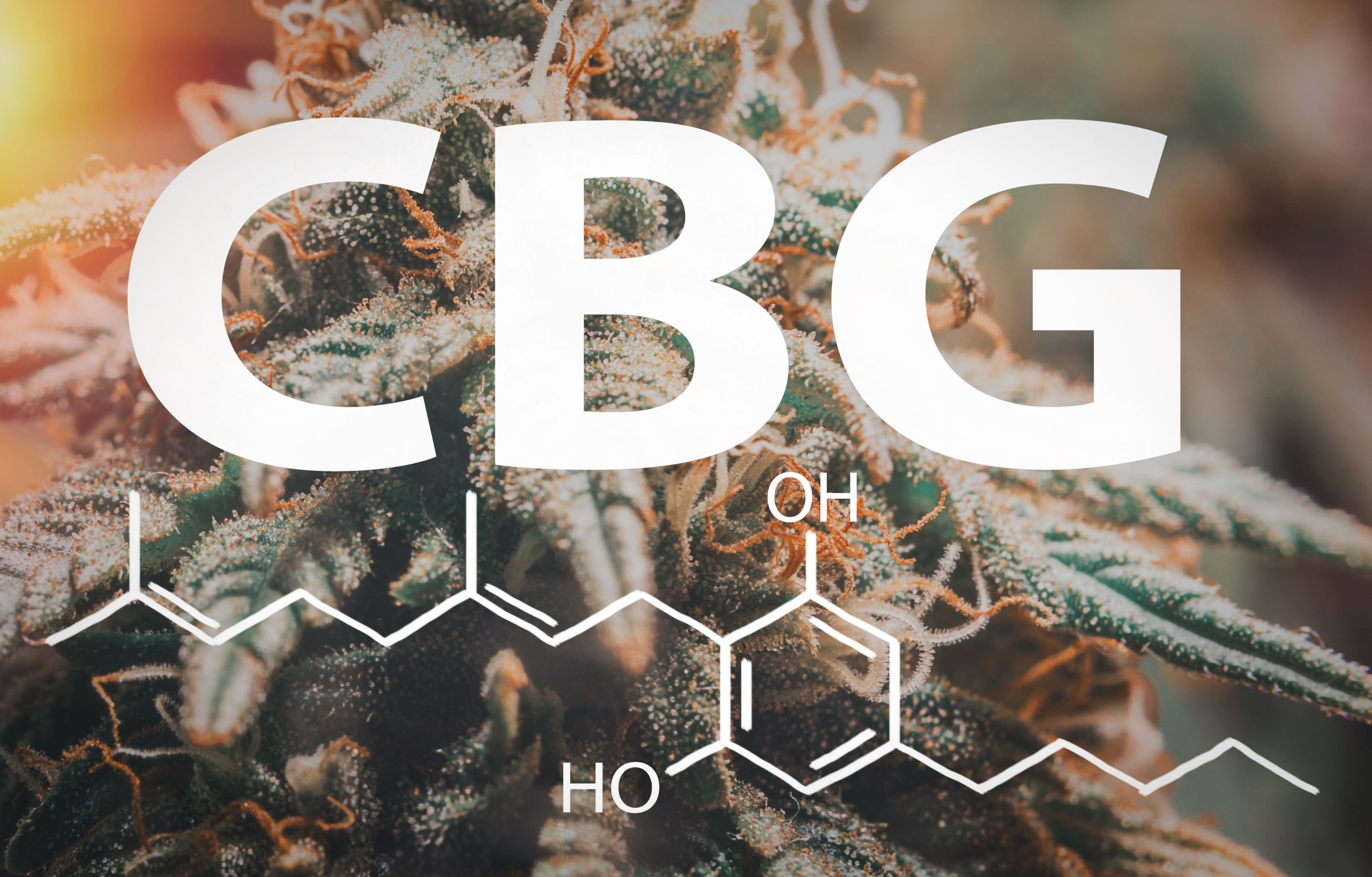Cannabidiol Gold (CBG) has been dubbed “The Cadillac of cannabinoids” due to its rarity and potential therapeutic benefits. CBG was discovered in the 1960s, and research into its potential has only been increasing.
It is thought to have powerful antibacterial, anti-inflammatory, and neuroprotective properties and is being studied for its potential to treat glaucoma, cancer, Huntington’s disease, and more. CBG is found in CBD and traditional marijuana strains at deficient levels, usually less than 1%. Creating CBG tinctures and other isolate-based products can take up to 20 times the amount of plant material compared to high-CBD or THC strains. This makes CBG a particular and unique cannabinoid worth cultivating and harvesting.
What is CBG?
CBG, or Cannabidiol Gold, was discovered in the 1960s by researchers. It is a non-intoxicating cannabinoid that has the potential to help with a variety of health conditions, from glaucoma to cancer.
What makes CBG so unique?
CBG has been dubbed the “Rolls Royce of cannabinoids” because it is present in hemp and traditional marijuana strains at a minimal amount, usually less than 1%. Creating CBG tinctures and other isolate-based products can take 20 times the amount of plant, making it a highly sought-after compound.
What are the health benefits of CBG?
CBG has been found to act on particular physiological systems and results for medicinal use are promising. It is thought to be particularly effective in treating glaucoma because it reduces intraocular pressure and decreases the inflammation characteristic of inflammatory bowel disease.
It is also a potent neuroprotectant and is currently being evaluated for its ability to combat ailments like Huntington’s Disease. It has cancer-fighting properties and is a powerful antibacterial that can even treat MRSA. It also shows promise as an analgesic, therapy for psoriasis, and as antidepressant.
CBG is a potent cannabinoid with the potential to treat a variety of health conditions. With further research, it may become even more widely used in medicine and wellness products shortly. Its unique properties make it a precious compound, so investing in CBG can be a wise choice for those looking to stay ahead of the curve in cannabinoid-based treatments.
CBG Was Discovered in the 1960s
Cannabidiol Gold, or CBG, was discovered in the 1960s by researchers. It is a non-intoxicating cannabinoid that has been dubbed “the Rolls Royce of cannabinoids” due to its rarity and potential therapeutic benefits. Since its discovery, research into the potential health benefits of CBG has only been increasing.
Scientists have found that it can act on particular physiological systems and results for medicinal use are promising. This makes it a precious compound with immense potential for medical treatments and wellness products.
CBG Is Non-Intoxicating
CBG is a non-intoxicating cannabinoid that has been gaining attention in the medical and wellness community due to its potential therapeutic benefits. Unlike THC, CBG does not produce any psychoactive effects when consumed, making it an attractive option for those seeking relief from various ailments without feeling “high.”
CBG is Being Studied for its Role in Pain Management
CBG is being studied for its role in pain management and other health conditions. CBG is being studied for its potential to treat glaucoma, cancer, Huntington’s disease, and more.
It has been found to reduce intraocular pressure in glaucoma patients, decrease inflammation characteristic of inflammatory bowel disease, act as a potent neuroprotectant, and even combat cancer cells. It has also shown promise as an analgesic for pain management and treatment of psoriasis.
CBG Is Found in Smaller Amounts than CBD or THC
CBG is found in traditional marijuana strains at deficient levels, usually less than 1%. Creating CBG tinctures and other isolate-based products can take up to 20 times the amount of plant material compared to high-CBD or THC strains. This makes CBG a highly sought-after cannabinoid, and investing in it can be a wise choice for those looking to stay ahead of the curve in cannabinoid-based treatments.
CBG May Help Regulate Mood Through Boosting Anandamide, the Body’s Bliss Molecule
Recent research has shown that CBG may help regulate mood by boosting anandamide, the body’s bliss molecule. It is thought to be able to interact with cannabinoid receptors in the brain and play a role in feelings of joy, relaxation, and happiness. This makes it an excellent option for those looking for natural ways to support mental well-being.
CBG May Help Combat Ailments Like Huntington’s Disease
CBG has been identified as having potential therapeutic benefits in treating neurological and inflammatory disorders, such as Huntington’s Disease, Parkinson’s Disease, multiple sclerosis, and inflammatory bowel disease. Research has also suggested that it possesses antibacterial properties. As such, CBG may be a valuable remedy for combating various ailments.
CBG is a Potent Neuroprotectant
CBG is a potent neuroprotectant and thus may help treat neurological conditions such as Parkinson’s Disease. By protecting neurons from damage, CBG may help maintain healthy brain function and potentially reduce the risk of developing certain neurological diseases.
CBG is Being Investigated as a Cancer Fighter
CBG is being investigated as a potential cancer fighter. Studies have shown that it can inhibit the growth of certain cancer cells, making it an attractive option for those looking to manage or combat certain forms of cancer.
CBG is an Effective Antibacterial Agent, Particularly Against MRSA
CBG is an effective antibacterial agent against methicillin-resistant Staphylococcus aureus (MRSA). Research has demonstrated the potential for CBG therapy against MRSA infection and disease persistence by inhibiting bacteria, eliminating resistant MRSA biofilms from skin or medical devices, and out-competing classical approaches against MRSA.
Furthermore, even when treated with lethal concentrations of CBG ranging from 2 to 16x MIC, MRSA did not develop resistance. European research has further confirmed that CBG is an effective antibacterial agent against MRSA.
CBG is Thought to be Particularly Effective in Treating Glaucoma
CBG (cannabigerol) has recently piqued the interest of researchers due to its potential to treat glaucoma, an eye condition that causes increased pressure in the eyeball and can lead to vision loss. Research suggests that CBG is particularly effective in this area due to its ability to act as a vasodilator and reduce intraocular pressure.
Endocannabinoid receptors are abundant in our eyes, making CBG even more beneficial for glaucoma treatment. The American Glaucoma Society also supports using marijuana or related compounds to treat this condition.
CBG Has Been Found to be Effective in Decreasing Inflammation Characteristic of Inflammatory Bowel Disease
The scientific research has shown that Cannabigerol (CBG) has effectively decreased inflammation of Inflammatory Bowel Disease (IBD). Through its anti-inflammatory properties, CBG has been found to be a potential therapeutic candidate for targeting the symptoms of IBD. Studies have demonstrated it to be beneficial in reducing inflammation, providing relief for those who suffer from IBD.
CBG Was Shown to Block Receptors That Cause Cancer Cell Growth
Studies have shown that CBG has the ability to block receptors in the body that cause cancer cell growth. This makes it a potential therapeutic candidate for targeting and fighting certain types of cancer. It is thought to be particularly effective against melanoma, colon, and pancreatic cancers due its powerful anti-tumor properties.
CBG May be a Future Tool in Preventing Bladder Dysfunction Disorders
CBG is a potential tool in preventing bladder dysfunction disorders. Studies suggest that CBG can reduce bladder inflammation and inhibit contractile activity, which may relieve those suffering from overactive bladder syndrome or urinary incontinence.
CBG is Being Studied as an Analgesic, Therapy for Psoriasis, and as an Antidepressant
CBG is a cannabinoid that is being studied for its potential to offer therapeutic benefits as an analgesic, a therapy for psoriasis, and as an antidepressant. Research has shown that CBG may help reduce inflammation caused by eczema and psoriasis and be a mildly antihypertensive agent.
Additionally, it has been established that CBG acts as a PPARα/γ dual agonist, and has significant antidepressant effects in the rodent tail suspension model.
As CBG is non-psychotropic, it can be safely used in therapeutic applications, making it an under-utilized cannabinoid of potential promise!
CBG is Found in CBD and Traditional Marijuana Strains at Very Limited Amounts, Usually Less than 1%
CBG is a cannabinoid commonly found in cannabis and hemp, albeit in minimal amounts. Generally, it is found in less than 1%, whereas CBD and THC can be found in higher concentrations, up to 25% for CBD and higher for THC in certain strains. However, thanks to the 2018 Farm Bill, hemp plants containing less than 0.3% THC are now federally legal.
In Summery,
Cannabigerol (CBG) is a cannabinoid that recently gained attention due to its potential therapeutic benefits. CBG is thought to be particularly effective in treating glaucoma, decreasing inflammation characteristic of inflammatory bowel disease, blocking receptors from causing cancer cell growth, and being studied as an analgesic, therapy for psoriasis, and as antidepressant.
CBG is found in CBD and traditional marijuana strains at minimal amounts, usually less than 1%. As laws regarding hemp production continue to evolve, more research can be done on the potential medical applications of this “Cadillac” of cannabinoids.

